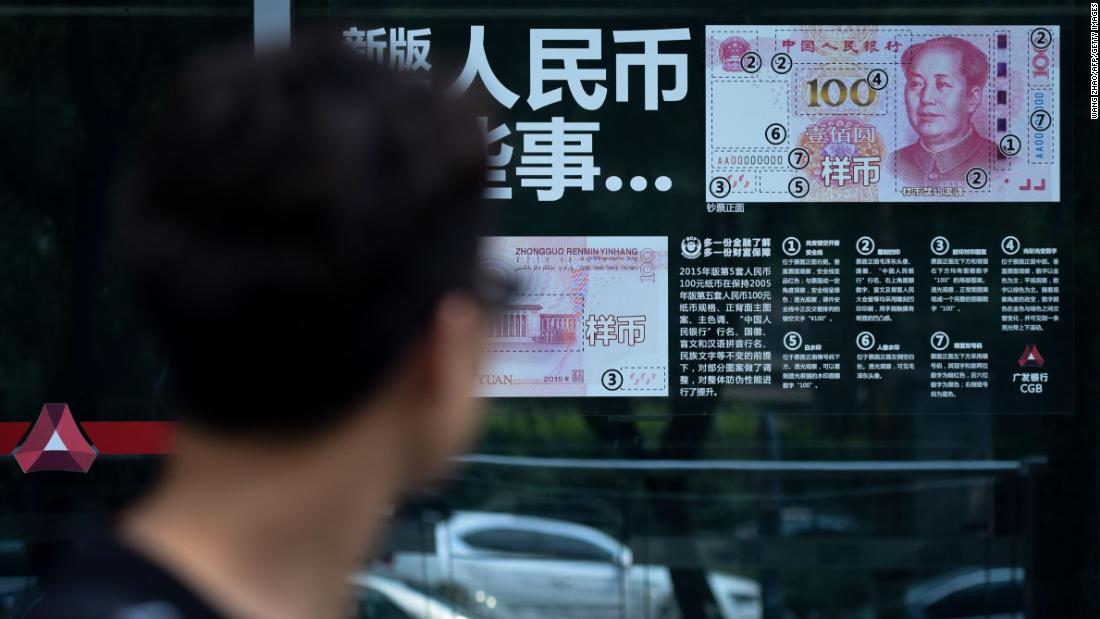[ad_1]
The Chinese central bank said the move mostly reflected market concern about “trade protectionism and new tariffs on China.” President Donald Trump escalated the trade war last week by announcing that the United States would tax just about every Chinese export starting in September.
“The fact that they have now stopped defending 7 against the dollar suggests that they have all but abandoned hopes for a trade deal with the US,” said Julian Evans-Pritchard, senior China economist at Capital Economics.
Much now hinges on the US response. Currency wars — in which countries get locked in a cycle of devaluations — hit both consumers and businesses, triggering inflation and sending asset prices plummeting.
“The debate about US [currency] intervention is going to heat up significantly,” said Kit Juckes, a strategist at Societe Generale.
Trump factor
Trump quickly showed he’s paying attention. On Twitter, he called the devaluation “a major violation.”
Despite evidence to the contrary in recent years, Trump has continued to complain that China devalues its currency to make the country more competitive. The question is what he does now.
A weaker currency can boost exports, but it also makes imports more expensive, which can cause inflation and hurt spending. Higher prices could force the central bank to hike interest rates, hitting economic growth.
This pattern could spread globally should other countries decide to retaliate. Devaluation also injects volatility and uncertainty into financial markets, since it causes the value of assets from property to stocks to fall.
“You have balance sheets that start to look very, very bad,” said Miguel Chanco, senior Asia economist at Pantheon Macroeconomics.
To weaken the dollar, the Trump administration could formally announce the end of the strong dollar policy introduced in 1995 under former President Bill Clinton. Trump could also direct the Treasury Department to work with the Federal Reserve Bank of New York to sell dollars in an effort to lower their value.
Chanco doesn’t think the president is there yet, but he does expect tough talk from the White House to continue.
High-stakes move
The decision to let the yuan slide was made in Beijing, a fact that could further complicate trade talks and make a deal even more elusive.
The yuan doesn’t trade freely like other major currencies. Every day, China’s central bank sets a “band” which limits movements in the yuan’s value to 2% up or down.
The last time it was permitted to reach 7 to the dollar was during the 2008 financial crisis.
China saw almost $680 billion in capital leave the country in 2015, according to the Institute of International Finance. That was the last time Beijing caused a market scare by devaluing its currency.
“China has probably determined that striking a deal with the US is unlikely,” said Jason Daw, head of emerging markets strategy at Societe Generale. That gives Beijing incentives to “dig in for a long-term stalemate.”
[ad_2]
Source link


